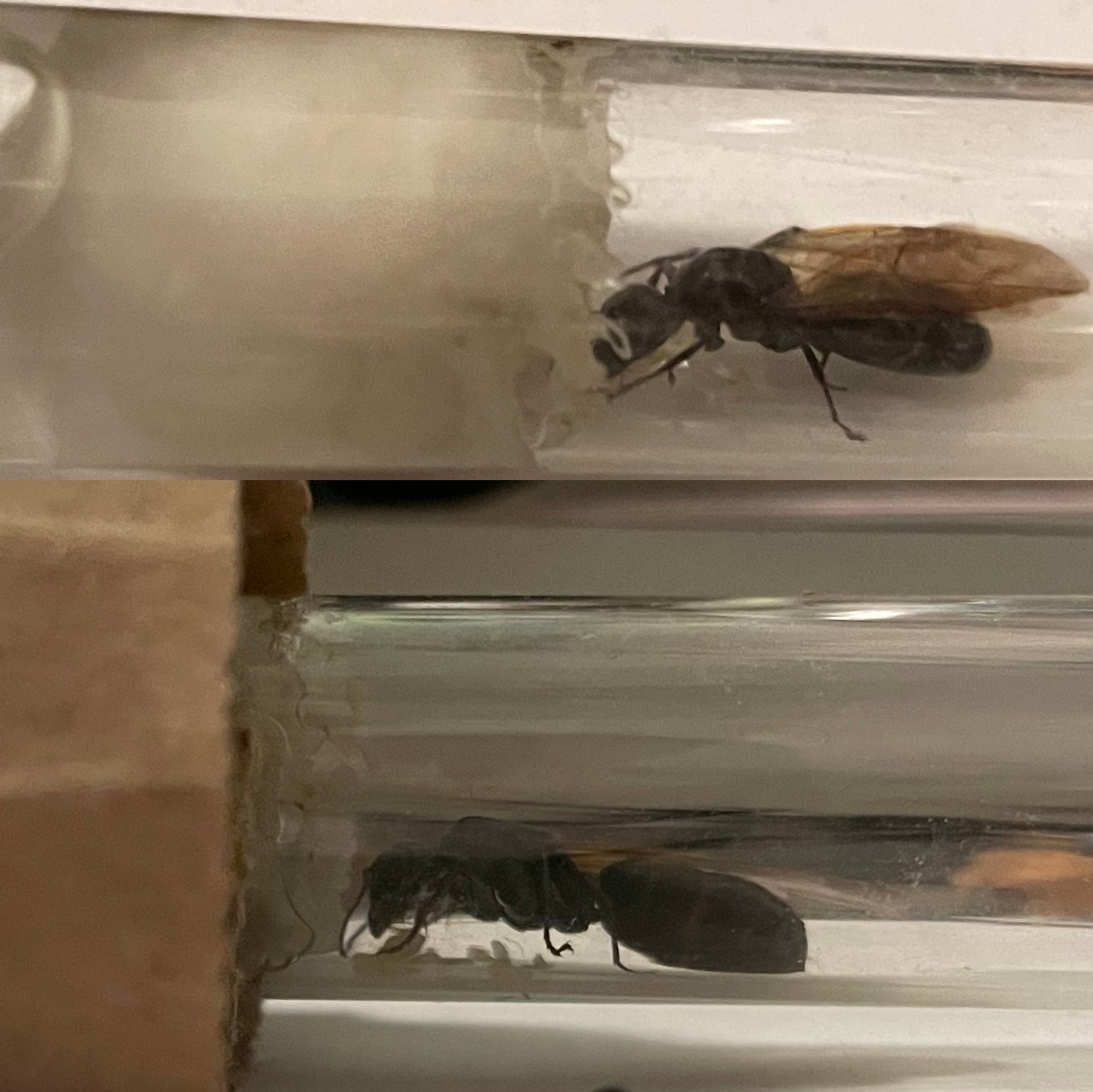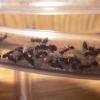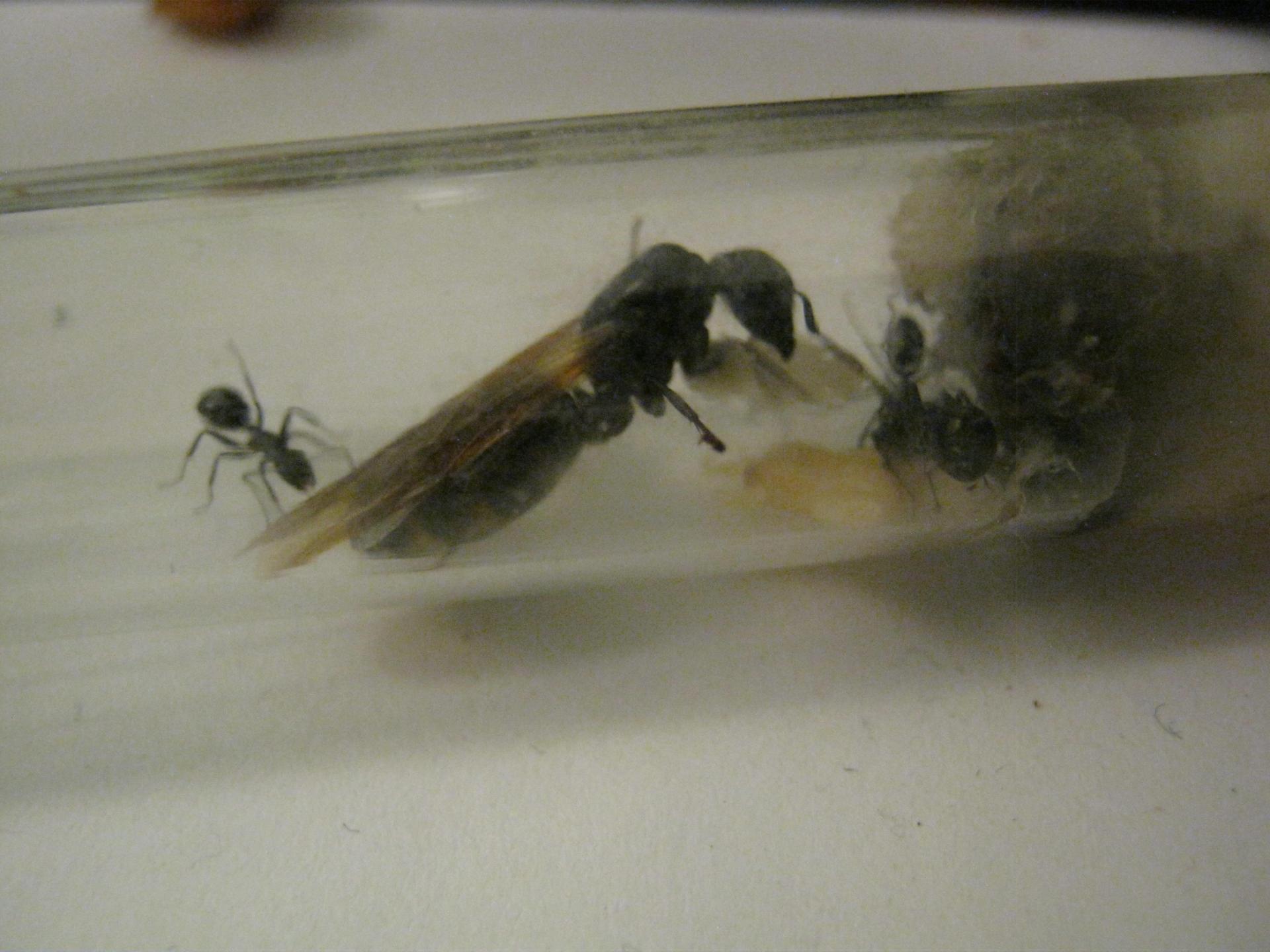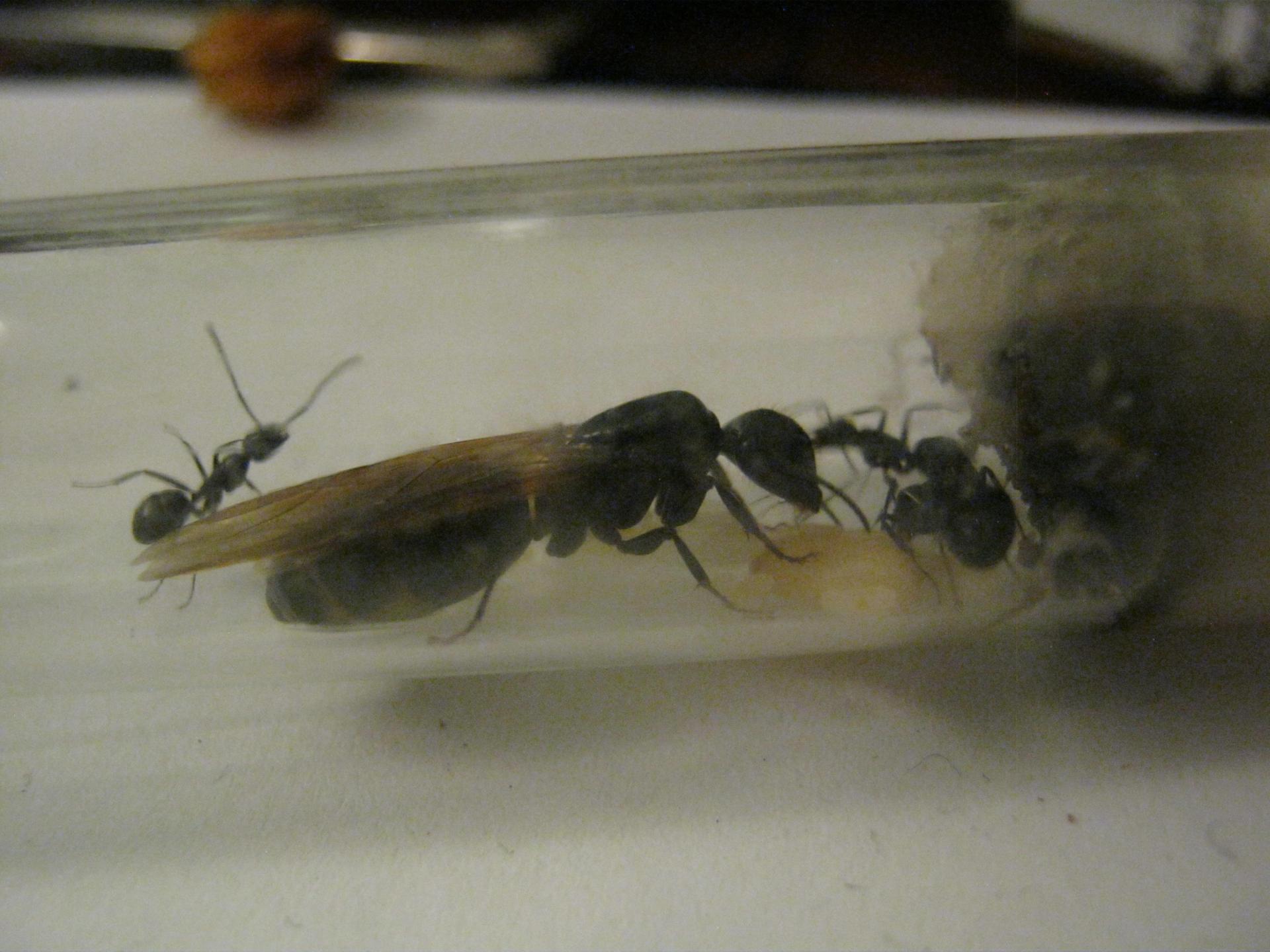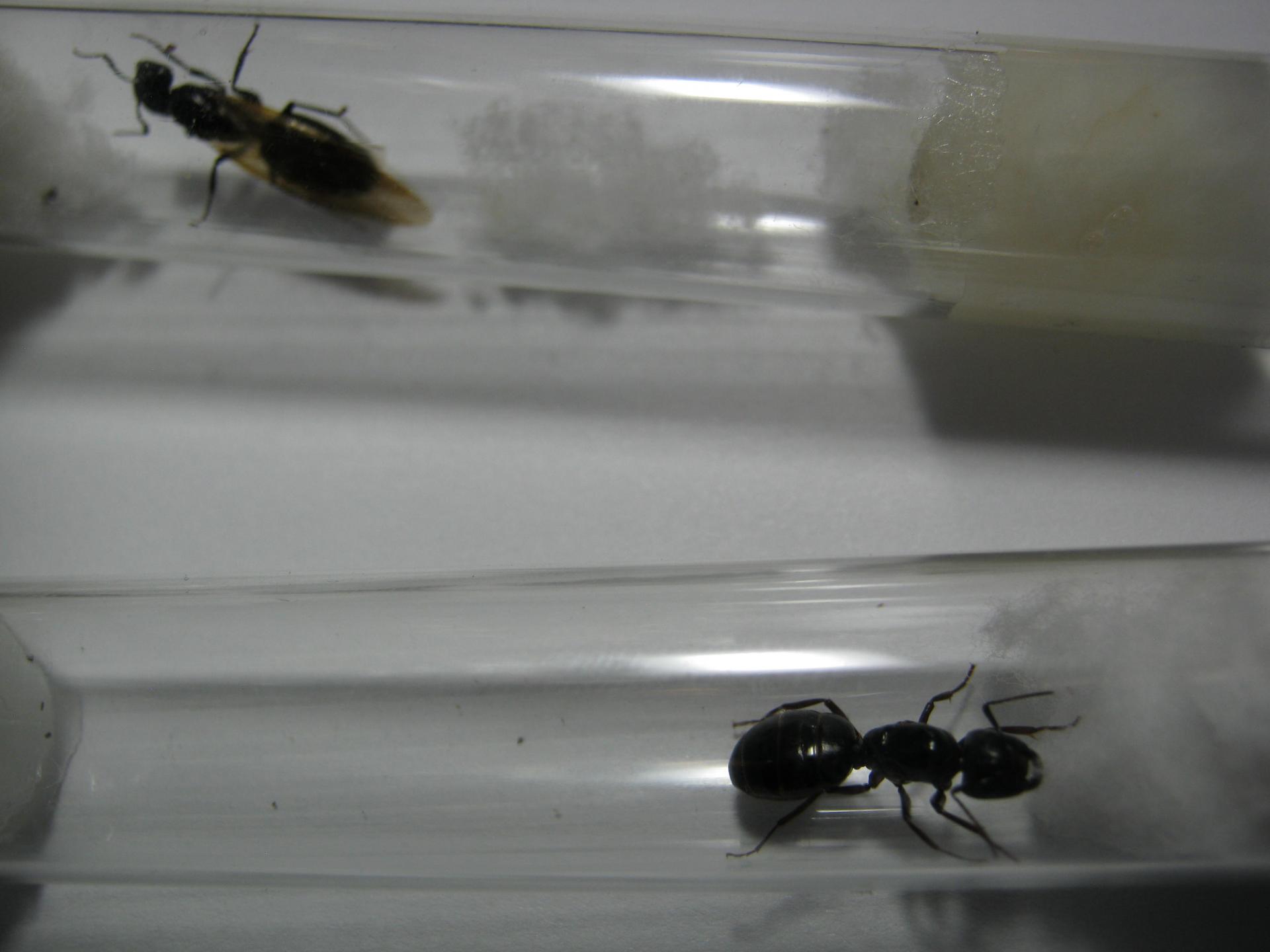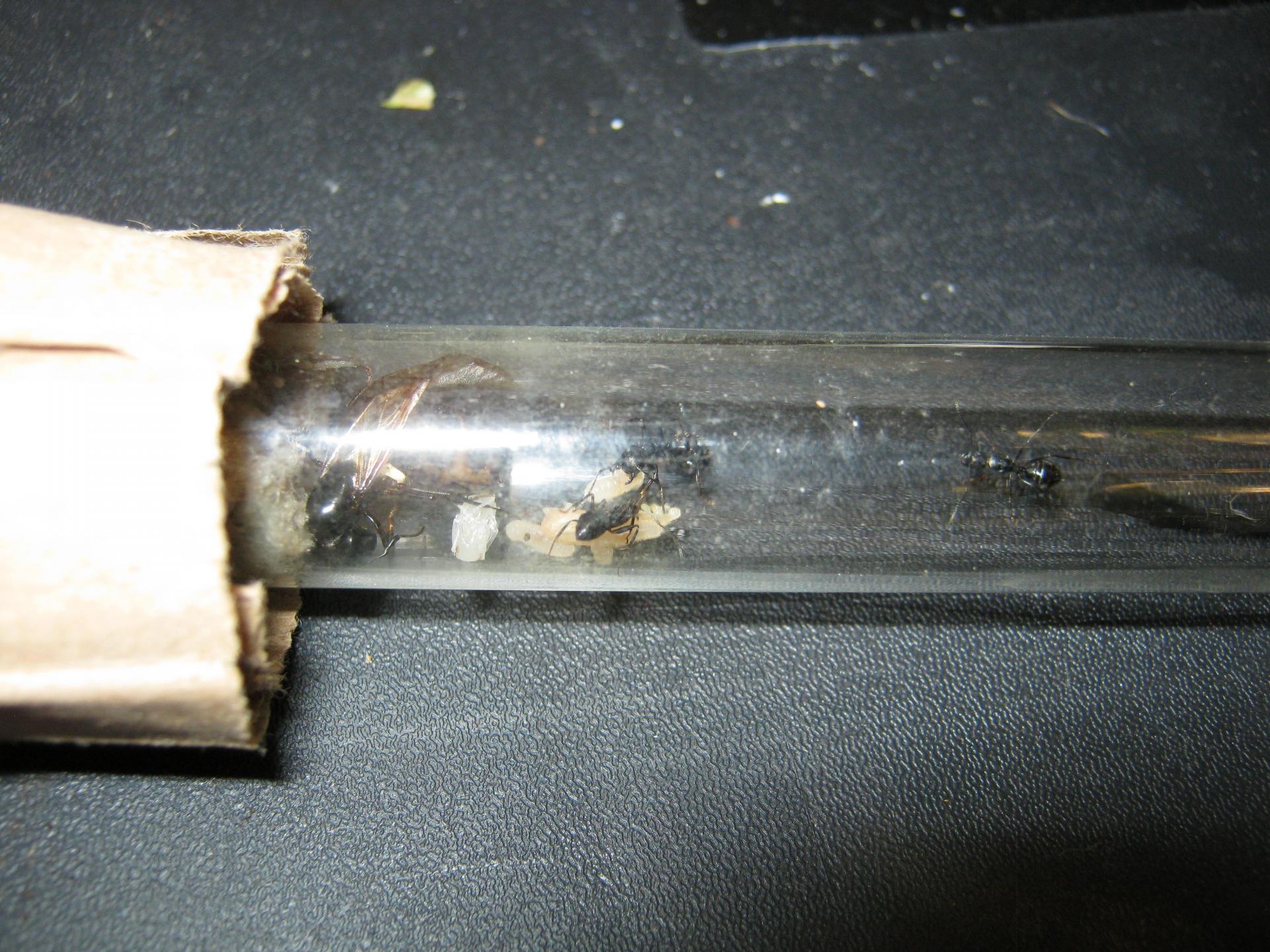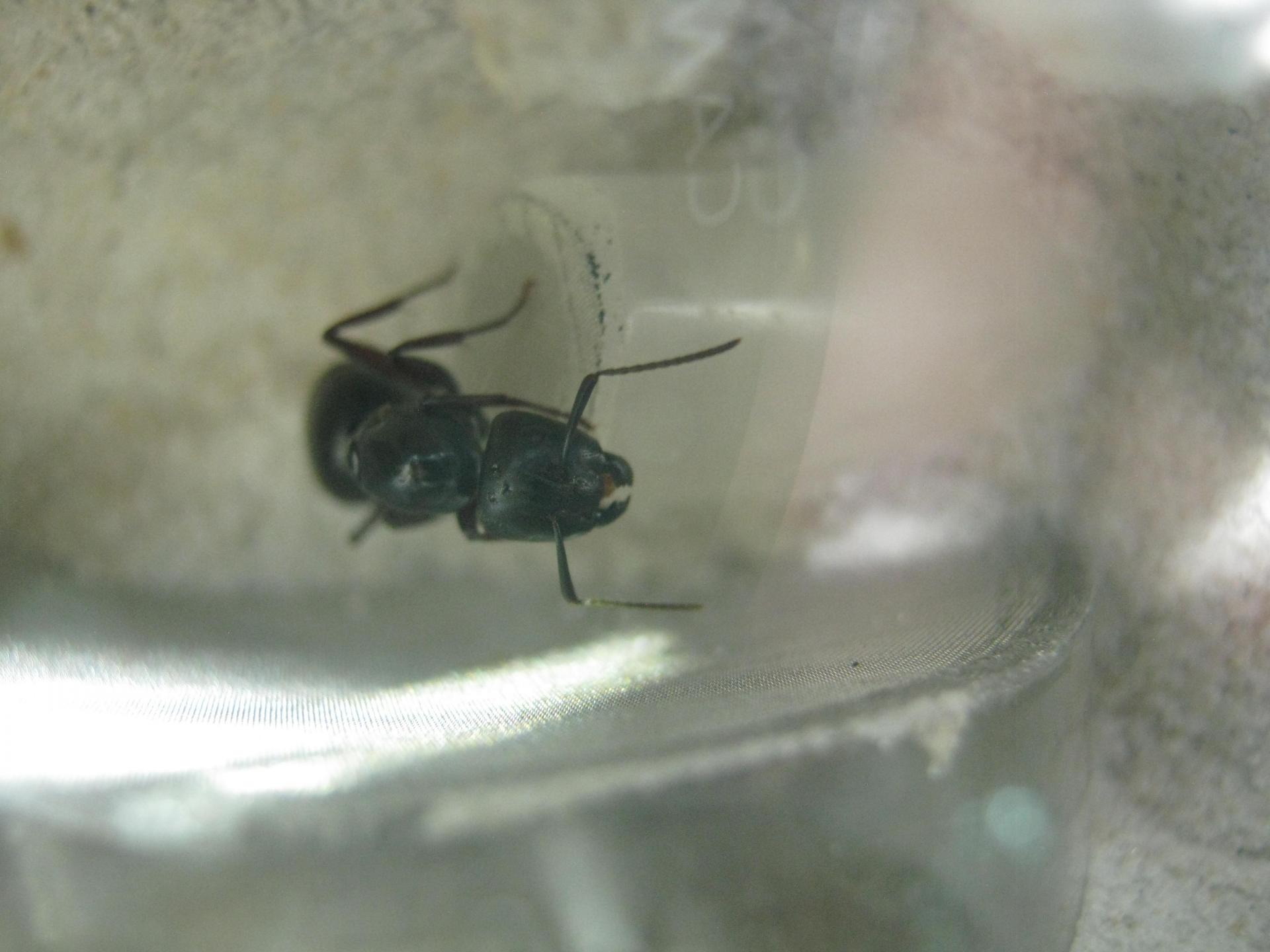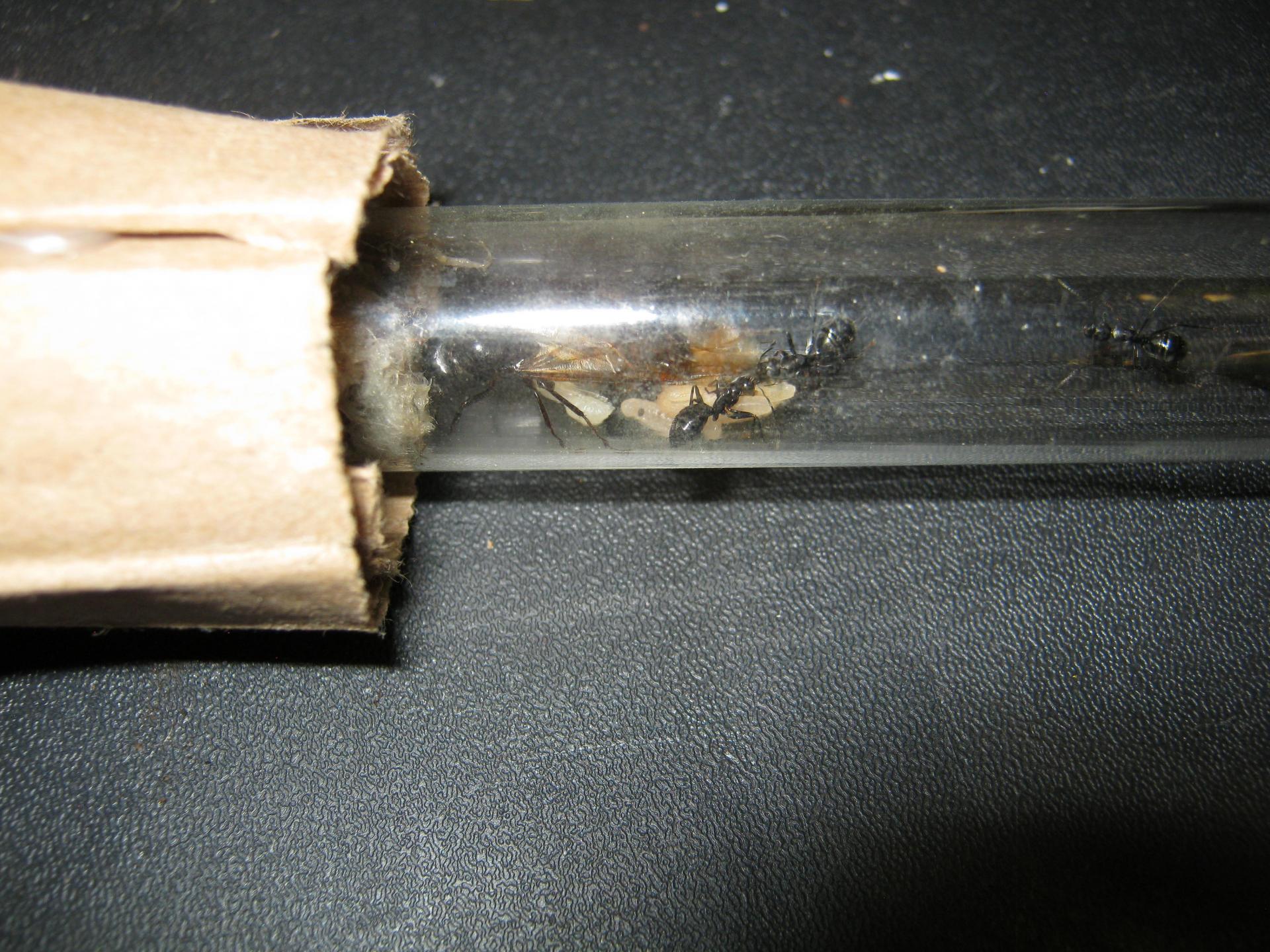Location: Northern Colorado (West Fort Collins)
I think they are Camponotus Herculanus, or C. Pensylvanicus (sp?)
I caught two queens in early June. One alate, and one that had already dropped her wings. The alate queen laid eggs, and now has 3 workers (still has her wings), and the De-alate queen still has not laid any eggs after nearly 2 months. Perhaps she is waiting until after she overwinters first?
I'll post some more after I get some more recent pics.
Thanks for looking, and giving any insight/tips/thoughts.




